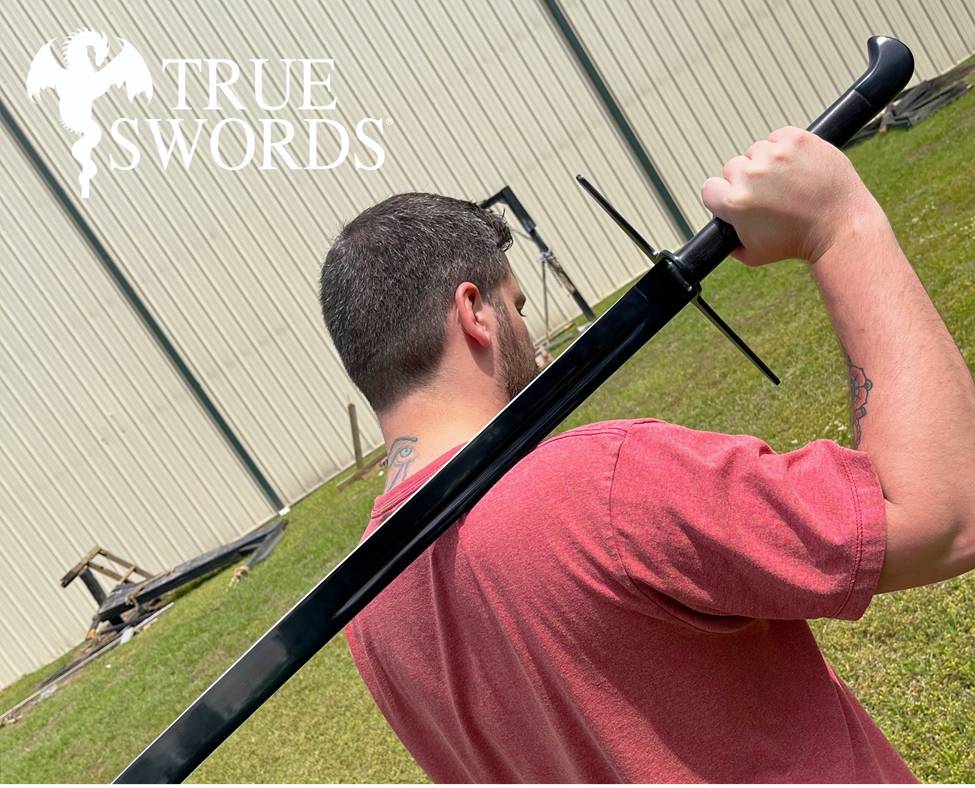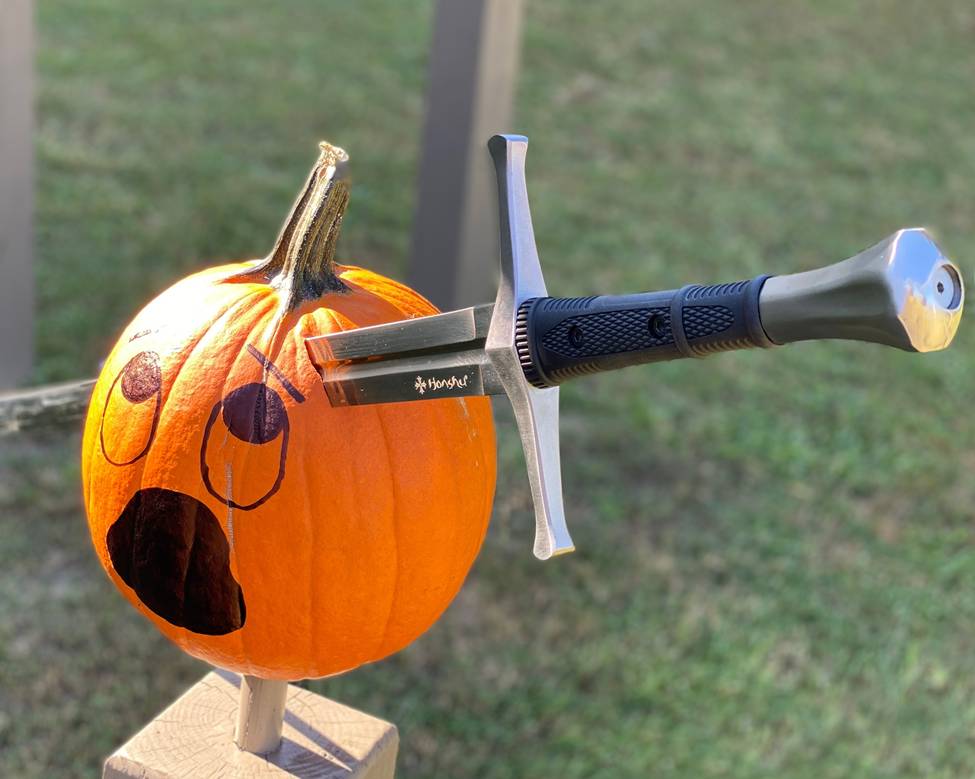Live Cutting Practice with Your Sword: Target Options (Plus Some Not-So-Good Ones)


So you think you’ve just gotten one of the best swords for self defense, or you’re otherwise interested in live swordplay. As in all arenas, practice makes better (and safer). A sword (or any weapon or tool for that matter) is only as good (and never any better) than the person wielding it. Therefore, if you want to use your sword for martial arts, or just for fun, live cutting practice is in order. It also means that you need to know what you can practice on, as well as the things that you shouldn’t practice on.
Start with this list.
Start with this list.
What to Slice?


First let’s talk about some of the more viable targets that actually make acceptable options for live cutting practice. The following are suitable targets for your sword’s edge.
- Fruit: Pretty much any fruit can be used as a viable target for cutting practice, but as a general rule, larger fruits make the best targets. Some of the best of these include watermelons, squash, pumpkins, cantaloupe, honeydew, and eggplants. These fruits can often be purchased at relatively affordable prices and present viable targets. Smaller fruits, like apples can be cut with a sword too, but they’re harder to hit, so save them for more “advanced” training, if you will.
- Water bottles: Water bottles make excellent live cutting targets for several reasons. One is that you’re repurposing trash. Just get some old water bottles or milk jugs, fill them with water, and you have a target. They cost pennies on the dollar, the water goes into the ground when you slice the bottle, and you can recycle the scraps when you’re done with practice anyway. Also, another thing that makes them great is that they’re dense and resist the sword, which gives you good feedback while you’re training. Another thing here is that, depending on the type of plastic used in the bottle, it’ll tell you if your sword is sharp or not. A dull blade that doesn’t contact the bottle at the right angle is liable to get deflected or push it out of the way rather than cutting it efficiently.
- (Green) bamboo: Green bamboo is a relatively soft wood and therefore can make a good target. Just make sure of two things. One is that you don’t use dried bamboo. Even a fairly sharp sword is liable to bounce off of it. The other is that you cut on a steep angle. If you swing even a razor sharp sword at dry bamboo at a perfect 90°, it’s unlikely to cut through it.
- Tatami mats: Tatami mats, which are made of straw or rushes and which are commonly used on the flooring of Japanese interiors, are traditionally used for cutting practice when rolled up. They might be a bit more expensive than some of the other methods here but they still make good targets for cutting practice.
- Cardboard: Cardboard of the proper weight and thickness can also make a good target for cutting practice. Just be aware of one thing: paper (cardboard included) is actually pretty quick to dull a keen edge, so if it’s paper or one of the other options listed here, go with another.


- (Boneless) cuts of meat: You can, if you choose, purchase cuts of meat for practice. They will not damage your sword and actually provide very satisfactory feedback. However, it is important to note that using meat solely for cutting practice can be extremely expensive and some might see it as wasteful, too.
- Pool noodles: Pool noodles are cheap, easily accessible, will not damage your blade when you handle it responsibly, and most importantly, are a blast to cut. If you can’t find tatami mats and want a low-cost, low-waste alternative, this is what you’re looking for!
What Not to Slice?
Now let’s cover a few of the things that should definitely not be used for live cutting practice with a defense weapon. Even the best sword for self defense should not be used to cut any of the following.
- Trees/solid wood targets: If you’re really working with one of the best swords for self defense, then it is battle ready and can theoretically withstand an impact against wood, especially a softer species like pine. However, this is not something you should do routinely. While wood is pretty much unequivocally softer than steel, it can be quite dense, and contact with hard woods can and will dull your edge. Moreover, repeated contact can strain the blade, resulting in deformations, nicks in the edge, or worse. A particularly hard strike can even break the blade.
- Anything stone or mortar: Do not, under any circumstances, strike your sword into or against any object made of stone, bricks, or mortar. You will damage the edge, can send chips flying that can injure you, or worse.
- Cuts of meat with bone in them: While cuts of meat can make viable cutting targets (as indicated above) avoid any cut of meat that has a bone in it. Here’s the thing: a good battle ready sword absolutely can cut through a bone, but you shouldn’t try. You are likely to damage the edge and you will definitely dull the edge prematurely if you do.
- Ice: Ice looks like it might make a good target — in the form of icicles, for instance. But ice can be very hard and striking a sword’s edge against it is likely to inflict more damage on the steel than the ice.
- Anything with metal in it: Do not under any circumstances swing your sword into anything made of metal or with metal in it. You will damage the edge and you could break the blade or overwhelm the steel’s temper and cause it to take a set.
The Best Sword for Self Defense: Training with a Battle Ready Sword
Naturally, this article only covers what you can safely use for cutting practice, as well as some things you should avoid. There are other rules you should observe, including but not limited to safe handling, keeping onlookers clear, and being aware of your surroundings at all times when handling a battle ready sword with an edge.
If you’re looking for the best sword for self defense, then take a look at some of the options we offer — and get in touch with us directly if you have any questions or want recommendations. We’re happy to help.
If you’re looking for the best sword for self defense, then take a look at some of the options we offer — and get in touch with us directly if you have any questions or want recommendations. We’re happy to help.